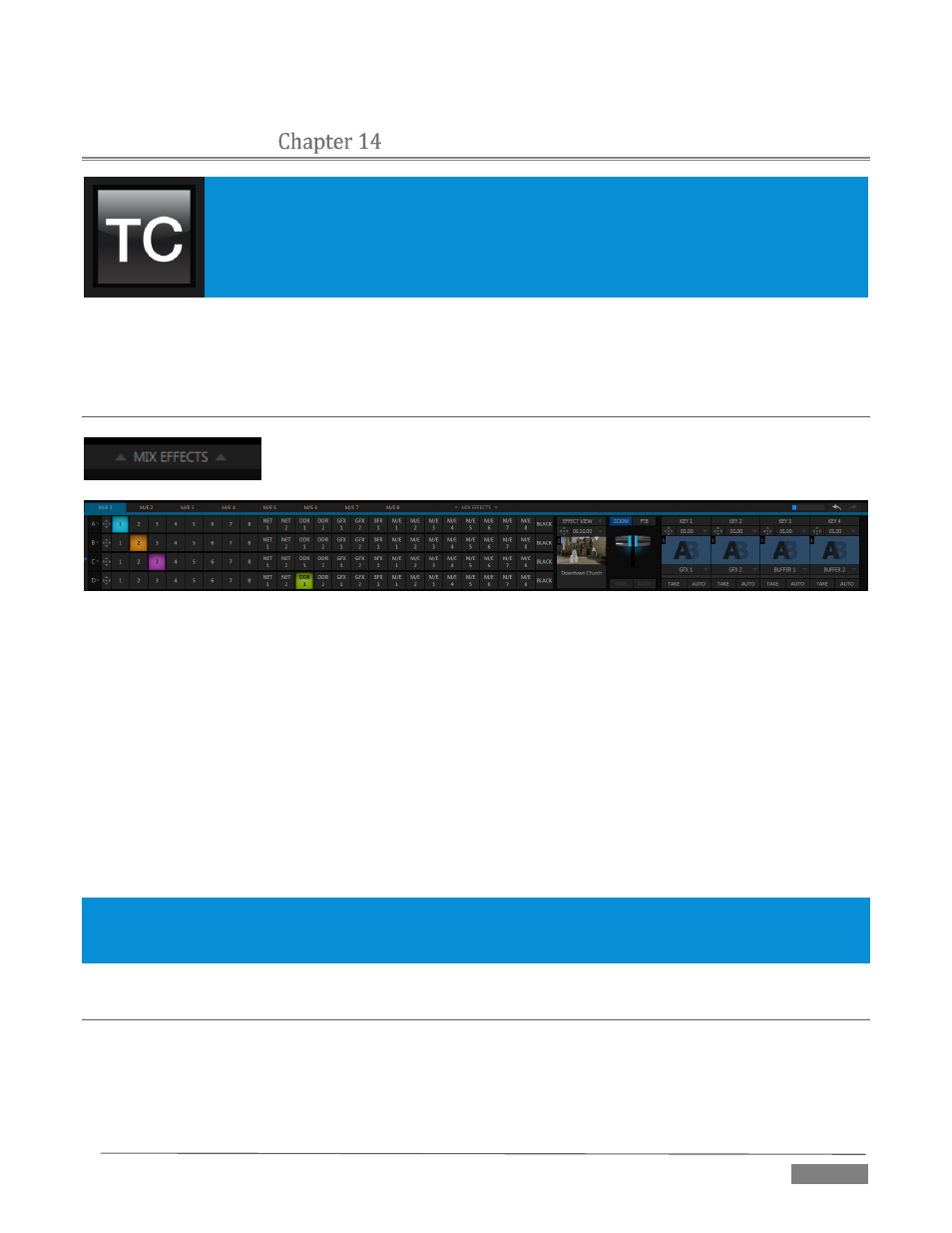Mix/effect (m/e) tools, Ection, Verview – NewTek TriCaster Advanced Edition User Guide User Manual
Page 151: Odes, N section 14.2

Page | 139
MIX/EFFECT (M/E) TOOLS
M/E banks provide truly awesome production power and convenience. Pre-configure
multi-layered compositions and switch them as easily as you would to any single input,
or use an M/E to control a special purpose sub-mix. This is also where TriCaster’s potent
realtime virtual set technology, called LiveSet™, is applied.
We introduced TriCaster’s M/Es way back in Section 2.6.9, but it’s time for us to look into these extremely
powerful tools in greater depth.
SECTION 14.1
OVERVIEW
The Mix Effects titlebar (Figure 159) beneath the monitoring pane on the Live
Desktop is a toggle button you can click to expand or collapse the M/E interface.
FIGURE 160 (TRICASTER 8000 SHOWN)
When expanded, the M/E pane spans the upper-central part of the Live Desktop. M/E’s are presented
individually in tabbed panes, each corresponding to a button in the main Switcher. The number of M/Es
available varies by model, up to eight.
As you would expect, selecting an M/E button on the (main Switcher) Program row displays the output from
the corresponding M/E on Program Output. Likewise, punching an M/E button on the Preview row cues up
that M/E bank’s output for an upcoming Take or Auto operation. This makes it easy to Take or Auto directly
to, from, or even between M/Es with a single click.
For TriCaster 8000 only, M/Es are re-entrant. This means that M/E buttons also appear on source selection
rows and Key channel source menus inside the M/E panels themselves. This is an exceptionally powerful
feature, and one offering endless creative possibilities.
Note: Self-referential reentrancy (i.e., re-assigning a given M/E as one of its own sources) is not supported.
TriCaster will simply show black in such cases. However you can often mimic effects of this sort by using multiple
channels in another M/E .
SECTION 14.2
M/E MODES
At first glance, an M/E panel in its default operating mode (Mix) is scarcely distinguishable from the main
Switcher. However, each of TriCaster’s M/Es actually offers two different operating modes:
FIGURE 159
